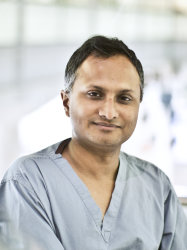BibTex format
@article{Marra:2018:10.1016/j.urolonc.2018.08.013,
author = {Marra, G and Ploussard, G and Ost, P and De, Visschere PJL and Briganti, A and Gandaglia, G and Tilki, D and Surcel, CI and Tsaur, I and Van, Den Bergh RCN and Kretschmer, A and Borgmann, H and Gontero, P and Ahmed, HU and Valerio, M and EAU-YAU, Prostate Cancer Working Party},
doi = {10.1016/j.urolonc.2018.08.013},
journal = {Urologic Oncology: Seminars and Original Investigations},
pages = {529.e11--529.e22},
title = {Focal therapy in localised prostate cancer: real-world urological perspective explored in a cross-sectional European survey},
url = {http://dx.doi.org/10.1016/j.urolonc.2018.08.013},
volume = {36},
year = {2018}
}

